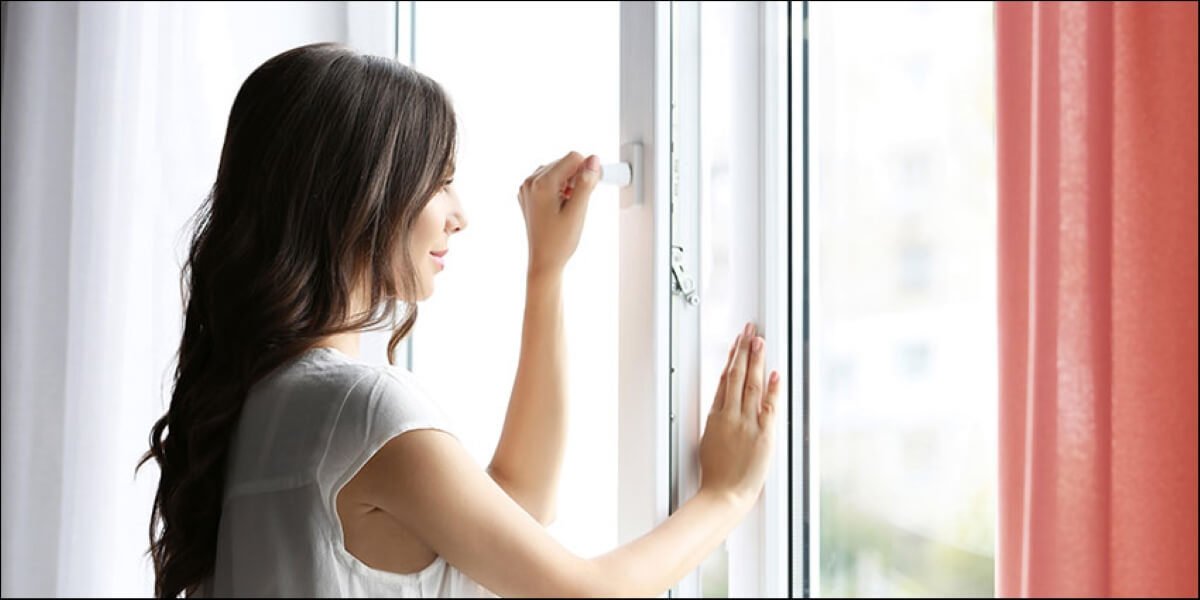
Guest Post: On A Hot Day, Should You Keep Your Windows Open Or Closed?
Here’s a question you’ll see asked on all kinds of forums, reddit threads, and Yahoo answers posts: when it’s hot outside, should I keep the windows open? This question is, of course, assuming you don’t have air conditioning. When you do have air conditioning, you want to keep your home windows closed – that’s pretty universally understood. When you don’t have air conditioning, you still might want to keep your windows closed – to a point.
Understanding Insulation
To understand why you want to keep your windows closed, you’ll first need to know a bit about heat transfer. Without getting overly technical, heat is always moving toward cold. That means if your home is cooler inside than it is outside, the outside air is going to try to move in.
Insulation works as a barrier to heat transfer. Most people think of insulation as the stuff you put in your attic, but your doors and windows are an essential part of how well-insulated your home is. By opening your windows, you’re removing a thermal barrier – that is, as long as your windows are providing the proper levels of insulation.
In the same vein, if you want to cool your house and the weather outside is cooler than it is inside, you’ll want to open your windows. Thermal barriers work both ways, and when the air outside is cooler, the warm air from in your home will circulate outside of your home – that is, if you have proper ventilation, and opening your windows provides that ventilation.
So when it’s hot out, keep your windows closed, and when it’s cooler out, open them! Simple, right? Well, not so fast…
Evaporative Cooling
We sweat to stay cool. How does sweat cool us? The process is actually quite simple and startlingly effective. In order to change forms from liquid to gas, water needs to absorb heat. When we sweat, the sweat on our bodies absorbs our body heat in order to evaporate – this reduces your body’s temperature.
There is a limit to evaporative cooling, however. When air is too humid, water vapor can’t be absorbed, so your sweat can’t evaporate. This means that if your home is particularly humid, you may need to open your windows if the outside air is dryer. You should also take a look at some of the top causes of airflow problems. When your home is overly humid, it’s likely because air isn’t circulating properly to the outside – water vapor from cooking, showers, and the like will then saturate your home’s air.
Apparent Temperature
What is the healthiest room temperature? There’s no obvious answer to that question. While temperature itself is an objective, measurable thing, experiencing temperature is entirely subjective. You’ve probably been chilly while people around you felt perfect, or perhaps you’ve been too toasty while other folks found it cool. Your body type, what you’re wearing, and a bunch of other factors can affect how you perceive temperature. Perceived temperature is often called apparent temperature, and that’s what things like the humidex or wind chill are accounting for.
You might find that when you’re sitting by a window with the wind blowing in, you’re cooler than if the windows were closed. This might be true even if, objectively, your home is warmer with the windows open. Indoor temperature is all about comfort, so if you test both methods and find your home is more comfortable with the windows open, don’t hesitate to open them!
Curtains
We’d be remiss if we didn’t talk about a simple way of upping your window insulation game – blackout curtains. You can find insulating versions of these curtains that will keep your home cooler in the summer and warmer in the winter – perfect if you opt for the closed windows route.
Your home is well-insulated, it’s warmer outside than inside, and it’s not too humid? You should probably keep your windows closed. Keep in mind that insulation in your whole home is the best way of maintaining a constant temperature. That means your doors and windows should meet insulation standards, and that you should have insulation throughout the rest of your home. Be sure to weather strip and caulk where appropriate, too.
Guest Post by Kiara Fullham

